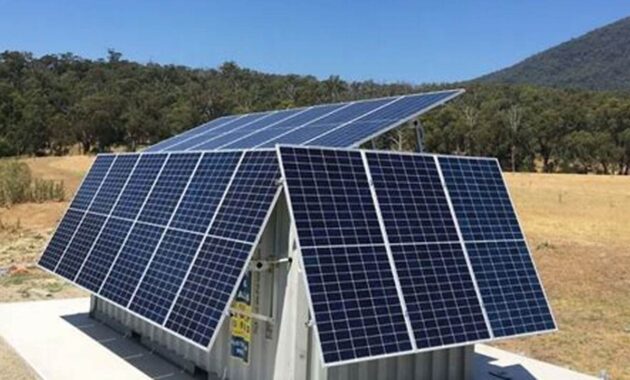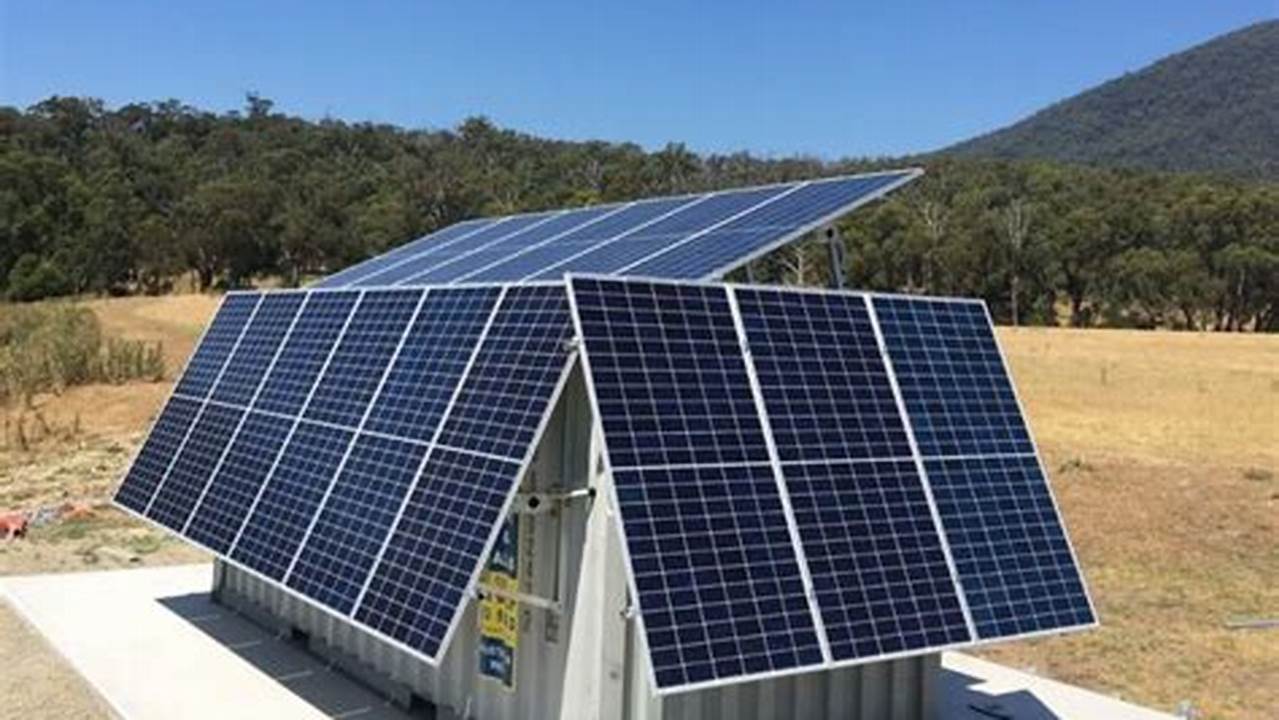
A stand-alone solar power system is an off-grid electricity system that utilizes photovoltaic (PV) panels to convert sunlight into electricity. These systems are typically used in remote locations or areas where grid power is unavailable or unreliable. The price of a stand-alone solar power system can vary depending on several factors, including the size of the system, the quality of the components, and the complexity of the installation. However, these systems offer numerous benefits, including energy independence, reduced electricity costs, and environmental sustainability.
The importance of stand-alone solar power systems lies in their ability to provide electricity in areas where grid power is not accessible. These systems can be used to power homes, businesses, and community centers, enabling access to essential services such as lighting, heating, and refrigeration. Stand-alone solar power systems also offer significant environmental benefits by reducing reliance on fossil fuels and contributing to a cleaner, more sustainable energy future.
The main article topics will explore the various factors that influence the price of stand-alone solar power systems, including system size, component quality, and installation complexity. Additionally, the article will discuss the benefits of these systems, including energy independence, cost savings, and environmental sustainability. Furthermore, the article will provide insights into the latest trends and advancements in stand-alone solar power technology, highlighting innovative solutions and cost-effective options.
FAQs on Stand-Alone Solar Power System Price
This section addresses frequently asked questions about the price of stand-alone solar power systems, providing concise and informative answers to common concerns and misconceptions.
Question 1: What factors influence the price of a stand-alone solar power system?
Several factors can impact the price of a stand-alone solar power system, including the size of the system (measured in kilowatts or kW), the quality of the components used, the complexity of the installation process, and the geographical location.
Question 2: Are stand-alone solar power systems expensive?
The upfront cost of a stand-alone solar power system can be higher than traditional grid-tied systems. However, over the long term, these systems can save money on electricity bills and provide energy independence.
Question 3: What are the benefits of stand-alone solar power systems?
Stand-alone solar power systems offer numerous benefits, including energy independence, reduced electricity costs, environmental sustainability, and increased property value.
Question 4: How can I reduce the cost of a stand-alone solar power system?
There are several ways to reduce the cost of a stand-alone solar power system, such as choosing a smaller system size, opting for lower-cost components, and performing some of the installation work yourself.
Question 5: What is the lifespan of a stand-alone solar power system?
The lifespan of a stand-alone solar power system typically ranges from 25 to 30 years. With proper maintenance, these systems can continue operating efficiently for many years.
Question 6: Are there any government incentives or rebates available for stand-alone solar power systems?
Yes, many governments and utilities offer incentives and rebates to encourage the adoption of solar energy. These incentives can vary depending on the location, so it is important to research available programs in your area.
In summary, stand-alone solar power systems provide numerous benefits, including energy independence, cost savings, and environmental sustainability. While the upfront cost can be higher than traditional grid-tied systems, long-term savings and incentives can make these systems a worthwhile investment.
Transition to the next article section: For more information on stand-alone solar power systems, their benefits, and cost considerations, continue reading the comprehensive article below.
Tips for Optimizing Stand-Alone Solar Power System Price
Implementing a stand-alone solar power system can be a cost-effective and sustainable solution for off-grid electricity. Here are several tips to optimize the price of your system while ensuring quality and performance:
Tip 1: Determine Your Energy Needs Accurately:
Carefully assess your energy consumption patterns to determine the appropriate system size. Oversizing the system can lead to unnecessary expenses, while undersizing it may result in insufficient power generation.
Tip 2: Choose High-Quality Components:
Invest in durable and efficient solar panels, batteries, and inverters. While lower-cost components may be tempting, they may not provide optimal performance or longevity, leading to higher replacement costs in the long run.
Tip 3: Explore Financing Options:
Consider financing options such as loans or leases to spread out the upfront cost of your solar system. This can make the transition to solar energy more manageable and affordable.
Tip 4: DIY Installation (if Feasible):
If you possess the necessary skills and knowledge, consider performing some or all of the installation yourself. This can significantly reduce labor costs, although it is crucial to ensure proper safety precautions and adhere to building codes.
Tip 5: Monitor and Maintain Your System:
Regularly monitor your system’s performance to identify any issues early on. Preventive maintenance can extend the lifespan of your components and optimize energy production, potentially saving you money in the long run.
Tip 6: Take Advantage of Incentives:
Research available government incentives, tax credits, or rebates that can offset the cost of your solar power system. These incentives vary by location, so explore all applicable programs to maximize your savings.
Summary:
Optimizing the price of your stand-alone solar power system requires careful planning and informed decision-making. By considering these tips, you can ensure a cost-effective and efficient system that meets your energy needs while minimizing long-term expenses.
Transition to the article’s conclusion:
In conclusion, stand-alone solar power systems offer numerous benefits, including energy independence, cost savings, and environmental sustainability. By following these tips, you can optimize the price of your system, ensuring a wise investment in your property and a sustainable future.
Conclusion
In exploring the topic of stand-alone solar power system price, this article has delved into the various factors that influence the cost of these systems. By understanding these factors, such as system size, component quality, installation complexity, and geographical location, individuals and businesses can make informed decisions when investing in solar energy.
The article has also emphasized the importance of optimizing the price of stand-alone solar power systems without compromising quality and performance. Through careful planning, informed component selection, exploration of financing options, and regular maintenance, it is possible to achieve a cost-effective and efficient solar energy solution. The tips and insights provided in this article can empower readers to navigate the complexities of stand-alone solar power system pricing and make wise investments.
As the world transitions towards a sustainable energy future, stand-alone solar power systems will continue to play a vital role in providing reliable and environmentally friendly electricity. By optimizing the price of these systems, we can accelerate the adoption of solar energy, reduce our reliance on fossil fuels, and contribute to a cleaner and more sustainable planet.
